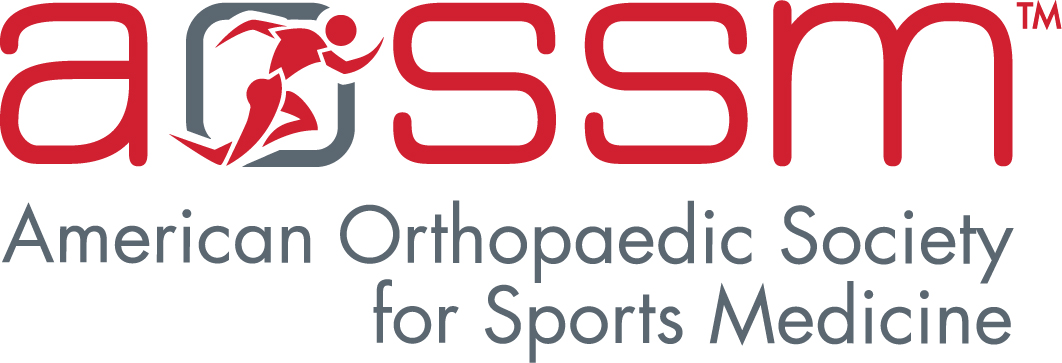For Immediate Release
For further information, contact: Lisa Doty Director of Communications (847) 292-4900 toll free (877) 321-3500 [email protected]
Wide Range of Sports Medicine Research to be Presented at the Annual Meeting of the American Orthopaedic Society for Sports Medicine, June 19-22, 1999
May 25, 1999-Rosemont, IL- Why are female athletes at the high school and college level have a four to six times more likely to suffer a serious knee injury than their male counterparts? Can cartilage be regenerated and transplanted into a patient's own knee? What makes ice such a good choice for relieving pain and swelling? When should the helmet of a hockey player suspected of having a head injury be removed?
Research findings about these questions and many others will be presented at the 25th Annual Meeting of the American Orthopaedic Society for Sports Medicine. From June 19-22, over 800 sports medicine specialists will attend this four day meeting at the Grand Traverse Resort in Traverse City, Michigan.
Over 50 scientific research papers that cover sports injury recognition, treatment, rehabilitation and prevention will be presented by leading researchers. In addition, there will be 28 Instructional Courses covering advances in sports medicine. Experts will also present Current Concepts presentations on cutting edge topics. All sessions and Instructional Courses are open to the media.
The following research will be presented at the meeting:
Severe Knee Injuries in Female Athletes
Six research papers will be presented that address the question of why female athletes are four to six times more likely to sustain a severe knee injury than their male counterparts. Biomechanical differences between males and females will be discussed in papers presented by Timothy E. Hewett, PhD, and Brady Vibert, BS. The effects of the menstrual cycle and estrogen on knee ligaments will be discussed in papers presented by Michael J. Belanger, MD, and William P. H. Charlton, MD. Jay Kimmel, MD, will present findings from a survey of injury incidence in high school athletes in Connecticut ands Allen Anderson, MD, will discuss the possibility of a predisposition to knee injury based on anatomical differences.
The State of the Art of Cartilage Transplantation
Joseph A. Buckwalter, MD, will moderate a session of the "State of the Art" of articular cartilage transplantation. Articular cartilage covers the ends of the bones that make up the joint. The articular cartilage surface is a tough, very slick material that allows the surfaces to slide against one another without damage to either surface. Cartilage cannot repair itself if it is damaged so people who have damaged cartilage have not had many treatment options other than to have all the cartilage removed or to learn to live with the damaged cartilage and adjust their activities accordingly.
A recent innovation in the treatment of damaged or missing cartilage, cartilage transplantation involves harvesting the cells which form cartilage from a patient, growing those cells in a lab and then transplanting them back into the patient. This discussion will highlight the current research and surgical procedures on the topic of articular cartilage transplantation from five expert researchers in the field.
Cold Compression Significantly Lowers Internal Joint Temperature after Surgery
Anyone who has had knee surgery has heard the phrase "Ice is nice" from their physical therapist or physician. Many previous studies have demonstrated the efficacy of cold, compressive dressing after surgery, but none have confirmed a significant decline in the temperature inside the knee. In this study, Stephanie A. Martin, MD, used thermocouple probes to measure the intra-articular temperature of patients after knee surgery and found that the temperature decreased in those treated with ice and actually increased in those who were not treated with ice. The researchers believe that this decrease in temperature is related to the beneficial clinical effects of using ice.
Ice Hockey Players with Suspected Head or Neck Injuries
Two researchers address the issue of whether to remove the helmet of an injured ice hockey player who is suspected of having a head or neck injury. These researchers studied male ice hockey players and demonstrated that, in all but the most extreme emergencies, the player's helmet should remain on while he is immobilized and transported to the hospital because of the risk of damage to the cervical spine. Robert J. Broxterman, MD, utilized computed topographic analysis in his study, and Mary Beth Horodyski, EdD, ATC/L, utilized radiographic analysis in her study to demonstrate the change in cervical spine alignment in players whose helmets were removed.
The American Orthopaedic Society for Sports Medicine (AOSSM) is an international medical specialty association of allied health professionals and physicians, primarily orthopaedic surgeons, who have demonstrated a significant and long-term commitment to sports medicine. The AOSSM promotes and supports education and research programs in sports medicine, including those concerned with physical fitness, as well as programs designed to advance our knowledge in the recognition, treatment, rehabilitation and prevention of athletic injuries.
Contact Lisa Doty, Director of Communications, to get copies of the manuscripts for the presentations highlighted in this release, to arrange interviews with the presenters, or to obtain more information about the meeting. A detailed Preliminary Program of the meeting is available on the Society's web site: www.sportsmed.org. In-depth news releases will be distributed via PR Newswire, Business Wire and SciWire. Note: All presentations are embargoed from broadcast, publication, and electronic disbursement until the day of the presentation.
###
